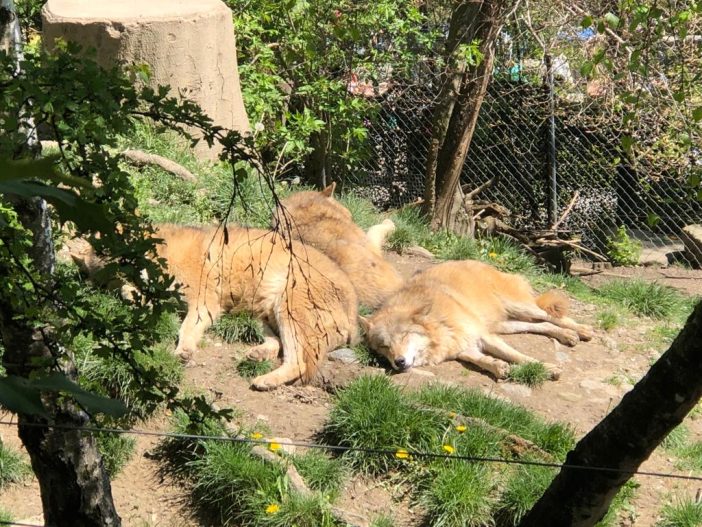https://youtu.be/KFME7nLgFrc
Hi everyone! Today I want to tell you a little about Zurich Zoo, which is a very popular destination for tourists and locals. As an animal lover and generally sensitive person, I would normally not visit zoos. The last time I went to the zoo was in 2001 in Kazakhstan. I was four years old, and seeing poor animals locked in cages made me feel so terrible that I avoided these places for over 20 years… until my friends brought me to the Zurich Zoo as a surprise for my birthday XD (they didn’t know about my “childhood trauma”).
Despite my bad experience as a child in Kazakhstan, I have to admit I really enjoyed this place. And I was genuinely happy to see how well animals were treated and taken care of at the Zurich Zoo.
While there are still lots of discussions going on trying to establish whether the zoos are important conservation and endangered species saving tools or animal rights abusers, Zurich Zoo seems to be doing all possible to ensure animals’ safety and wellbeing.
So, getting to the point! The first thing you need to know is that Zurich Zoo is not that much of a zoo, but rather is a nature conservation centre (just as it should be in, my opinion).
We work on behalf of threatened animal species by participating in international breeding programmes (EEP, ESB). We are also involved in eight special focus regions to protect endangered ecosystems and their biodiversity. We choose and implement nature conservation projects according to the principles of the World Association of Zoos and Aquariums WAZA. – Zooh Zurich (zoo.ch)
The zoo is about 27 hectares big and fosters 380 animal species. Animals are provided with huge living spaces with recreated natural (to their origins) environment and ecosystem. And when I say huge I mean it. All of the areas are big enough for animals to have space to hide from visitors and enjoy the privacy of their living space (I didn’t get to see any bears guess they were shy that day. And only by a lucky chance I could spot a group of wolves in the distance, who were sleeping on a hill and enjoying the sun).

Elephants living space –
-includes six pools and an underwater observation post, where visitors can admire the elephants as they splash about. The elephants now have greater freedom to move around day and night inside the enclosure. It is also home to antelopes and chickens. “They can have a family and social life and look for food from the 40 distribution points,” zoo director Alex Rübel told reporters. “We don’t want our animals to be eaten by others but they can use their natural skills to find food themselves and look out for the other animals.” A new technique for handling elephants is also being introduced. We have stopped using the direct “hands-on” contact method where trainers were present in the elephants’ environment in favour of a protected contact routine,” said Rübel. – SWI, swissinfo.ch
The living space for primates looks like a maze of several different rooms and outside areas. Monkeys, orangutans, and gorillas can travel through the maze and hide from the visitors too if they’d like to. By the way, there is an interesting story of Orangutan Payet, who was rescued, treated, and is now being prepared to go back to the Rainforest of Sumatra. And there are lots of interesting stories like this on the www.zoo.ch website, check it out. Also, they offer a webcam live streaming view on some of the areas like Amur Tigers, Elephants, Pinguins, etc.
Because of this approach and correct care, animals feel comfortable and breed. The Zoo currently has about 105 baby animals of different species. You can find the full list of all the “young animals” here. Apart from the breeding program, the centre is implementing conservation projects too.
In a summary, Zurich Zoo is an interesting place to visit. It is very educational and allows you to learn different facts about endangered animals that they take care of. And the most important thing (at least for me) by buying your tickets you support a good cause.



